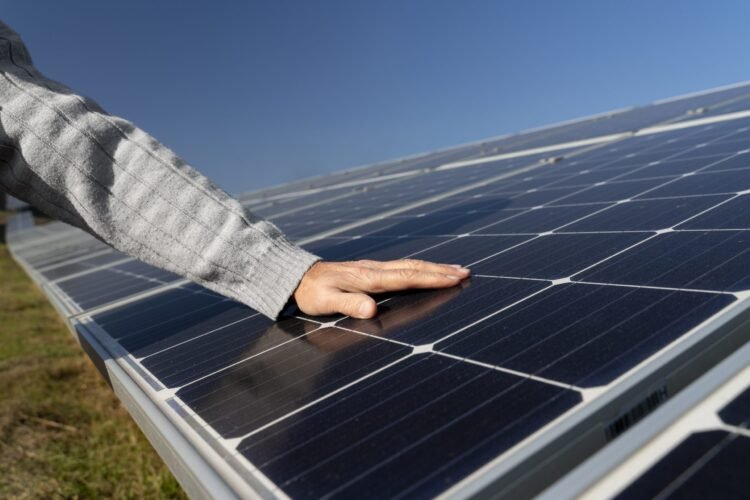Not every roof was made to carry heavy glass panels.
Not every solar system needs bolts, frames, and concrete fixes.
That’s why more people, from homeowners to boat owners, are shifting to flexible solar panels for roof. These aren’t just an alternative to traditional panels. They’re the next step forward. Lightweight, bendable, and built for more than just rooftops, they work on yachts, boats, cabins, and even curved metal roofs.
Let’s talk about what they are, how they work, and why the shift from 30 kg to 3 kg is changing everything.
What Are Flexible Solar Panels?
Flexible solar panels use the same core principle as any solar cell, they convert sunlight into solar energy. But instead of being trapped inside a thick glass panel, these cells are embedded into a lightweight material like plastic or polymer.
Some use monocrystalline silicon, while others use gallium-based thin films. Either way, they’re designed to flex and fit on surfaces that normal panels can’t. Think:
- Curved roofs
- Tents or trailers
- Boat decks
- Light structures that can’t carry 30 kg per panel
That’s what makes flexible solar panels for roofs, a solution that helps. You’re not stuck with straight lines and sharp corners anymore.
Why Lightweight Panels Make a Big Difference
Let’s be real: traditional glass panels are heavy. Each one weighs around 30 kg. Multiply that by 10 or 20 and you’ve got a serious load on your roof.
But flexible PV panels? They’re around 2-3 kg each.
That means:
- No damage to fragile roofs
- No need for heavy racking systems
- Easier installation
- More mobility (especially for boats and vehicles)
- Less labor, less time, less cost
If your roof isn’t brand new or made for weight, this is a huge win. Same solar power, way less pressure.
Why Traditional Glass Panels Feel… Outdated
Glass panels were made for strong concrete roofs. Flat spaces. Heavy-duty frames.
But the world has changed.
Now, solar is being added to metal sheds, lightweight rooftops, off-grid cabins, yachts, and even portable stations. That’s where traditional panels fall short. They’re stiff, fragile, and need exact mounting.
Flexible solar panels for roof don’t need all that. They peel, stick, or screw on in a few simple steps. No drilling. No structural reinforcements. No stress.
From 30 kg to 3 kg: A Shift in Solar Thinking
It’s not just about weight, it’s all about mindset.
Old systems were built for industrial zones. The new wave of solar is for everyone. You can now power your boat, tiny home, or sloped roof without hiring a full crew or altering your structure.
That’s why flexible PV panels are being adopted so quickly. They:
- Fit in more places
- Cost less to install
- Look cleaner
- Still generate reliable energy
And let’s not forget, flexibility doesn’t mean weakness. The right panel still delivers solid output and long lifespan.
Who Should Consider These Panels?
You have a metal or curved roof
You live in a mobile home or off-grid cabin
You want solar for your boat or yacht
You’re looking for a lighter, faster install
You care about looks and roof preservation
Then flexible solar panels for roof are probably your best move.
Final Word
This isn’t about following trends. It’s about using the right solution for your space.
Glass panels will always have a place—but they don’t belong everywhere. Not every roof can hold them. Not every structure should be changed just to carry them.
With flexible solar panels for roof, you’re not just getting lighter panels. You’re getting a lighter process, a smarter system, and more solar energy without the stress.
Flexible PV panels are the future, and the future, as it turns out, weighs about 3 kg.
FAQs.
1. My roof isn’t strong or flat, does that mean I can’t go solar?
Not at all. That’s exactly why flexible solar panels for roof exist. You don’t need a concrete slab or steel beams. These panels are made for the rest of us—with older rooftops, metal sheds, or curved surfaces that just can’t take the weight of glass. You can still go solar—without the stress.
2. I live in a cabin and can’t afford heavy solar setups. Are there real options for people like me?
Yes, and they’re better than ever. Flexible PV panels are a perfect solution for cabins, tiny homes, and off-grid living. They’re light, easy to install, and way more affordable to set up. No big crews. No damage to your roof. Just clean solar energy—done the smart way.
3. I want to add solar to my boat, but is it even worth the hassle?
If you’re using heavy glass panels, then yeah, it’s a hassle. But with flexible solar panels for roof, it’s different. They’re built for boats, yachts, and uneven decks. Lightweight. Waterproof. Easy to place. You don’t need to drill holes in your boat to enjoy free, reliable solar power on the water.




